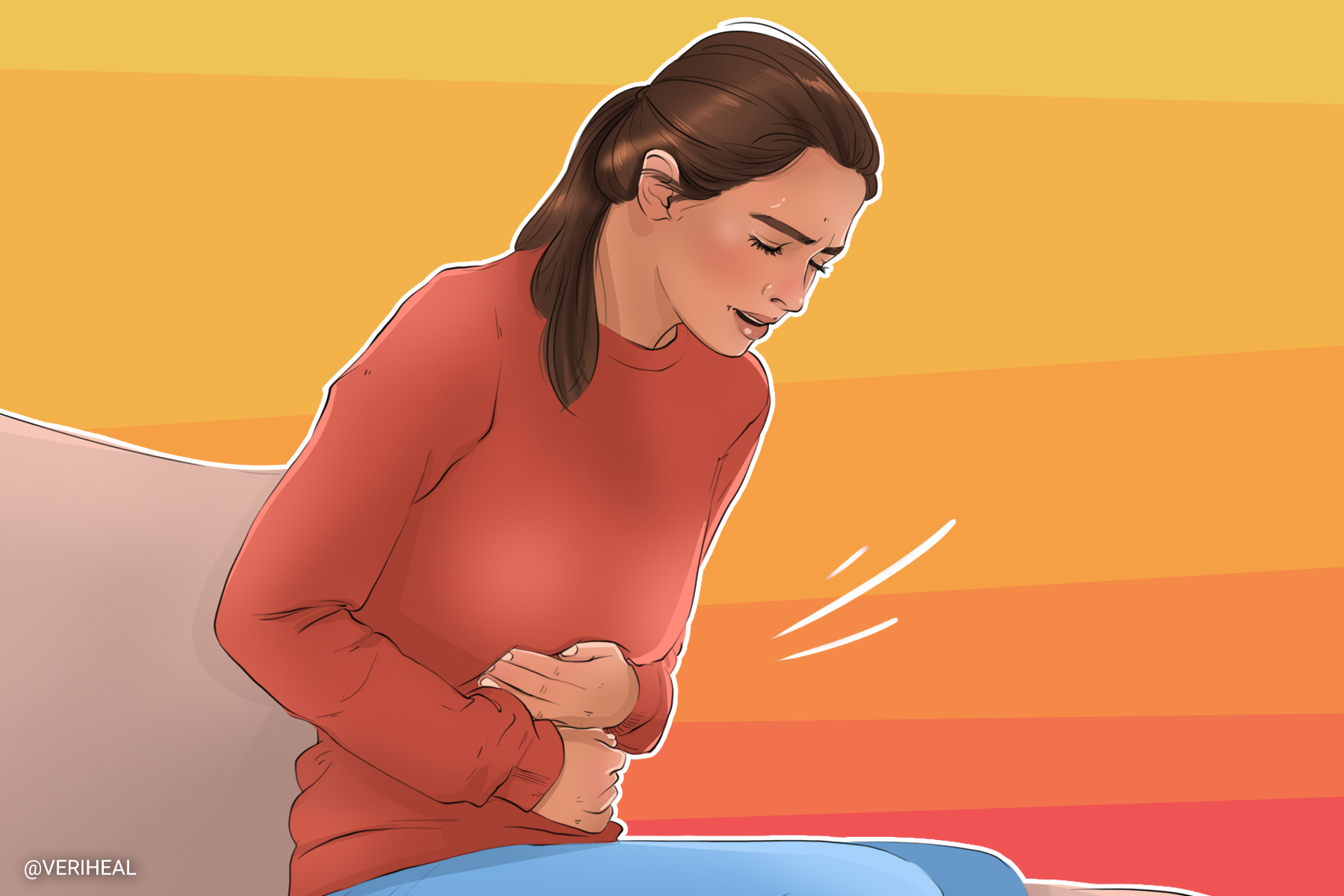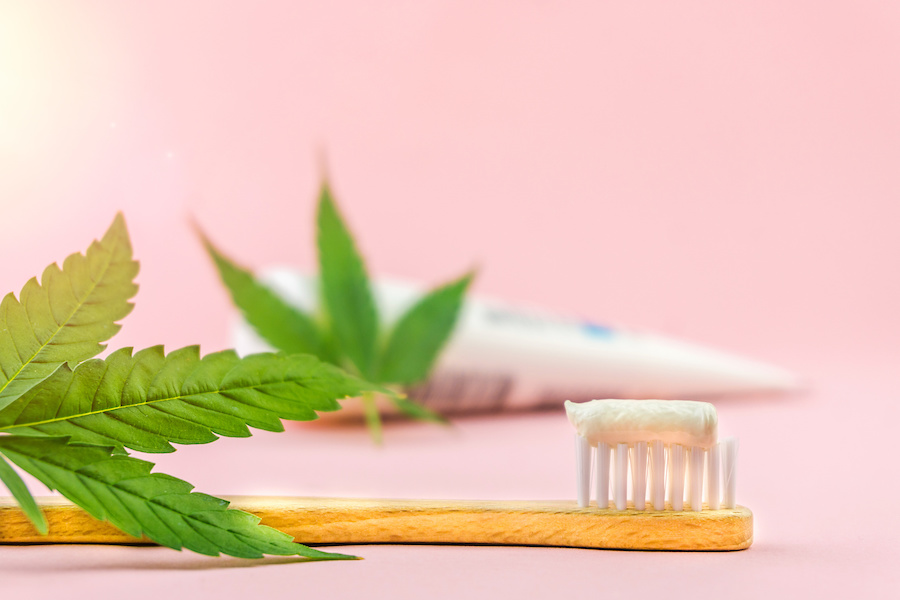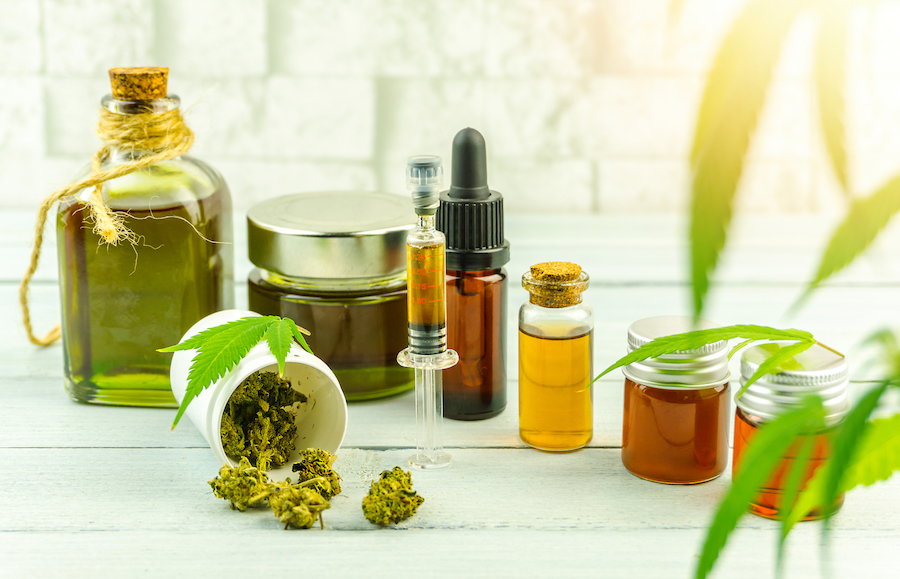Medical Marijuana and Oral Ulcers: is it an Option for Relief?

- Can CBD Treat Oral Ulcers and Wounds?
- The Oral Effects of Cannabis
- Causes of Mouth Ulcers and Sores
- Mouth Ulcers Classifications
While many people get them, oral sores and ulcers are no laughing matter. Sometimes they can heal in just a few days and other times they can linger for weeks or months. Unfortunately, there are several causes of mouth ulcers ranging from eating irritating foods to more serious medical conditions. But is there a case for using medical cannabis for treating these annoyances? Read on to find out more.
Cannabis contains 100s of organic compounds called cannabinoids, which include Δ9-tetrahydrocannabinol (THC) and cannabidiol (CBD). These natural compounds begin interacting with our bodies through the endocannabinoid system (ECS). The ECS is a system in our body that functions through cannabinoid receptors CB1 and CB2. When these receptors are activated, they increase or decrease our natural endocannabinoid levels. Endocannabinoids such as anandamide (AEA) and 2-arachidonoylglycerol (2-AG) are fat-based neurotransmitters that are responsible for a variety of processes in our bodies. These processes include regulating sleep and pain perception, as well as modulating our immune system to slow down inflammation.
When it comes to medical cannabis use for oral applications the research is very mixed. Some studies support that it may help. On the other hand, there is a lot of evidence that suggests that long-term or heavy marijuana use can increase the risk of developing oral ulcers and sores as well as other severe dental issues (10).
Can CBD Treat Oral Ulcers and Wounds?
There are several studies that have tested the use of CBD for healing oral ulcers and wounds. CBD is known for its ability to slow down inflammation and has been shown to be effective in treating ulcers and wounds on the skin. Much of this research has not occurred in vivo, or in live humans, but some researchers may have grounds to argue that CBD can be used to help oral wounds heal.
Some scientists believe that CBD works orally very similarly to how it works for healing skin ulcers. Though our mouths are lined with mucosal tissues, these tissues are very similar to our skin and include epithelial cells. CBD primarily interacts with our body through CB2 receptors of the ECS. Epithelial cells have been found to have larger numbers of CB2 receptors. When CB2 receptors are activated, peroxisome proliferator-activated receptor type y (PPARy) is also activated. PPARy receptors are responsible for the expression of genes as well as modulating the immune system. When these receptors are activated, the inflammatory response in the body slows down and oral ulcers heal quicker (23).
A 2018 study examined the effects of CBD on tongue wounds in 60 rats. These wounds were made from a 5mm biopsy punch and the rats were given abdominal injections of different amounts of CBD every day (13). The weights of the rats and wounds were assessed after 3 days and 7 days of treatment and found some interesting results. Overall, CBD use did not influence the area of the oral lesions during both checks. Results from using a microscope showed that wounds during day 3 testing exhibited a lower inflammatory response. This did not hold true on day 7. Researchers of this study believe that CBD may be beneficial and helpful in the early stages of the healing process, but not in later stages. However, more research needs to be done to fully determine if CBD has a use on existing oral wounds in rats.
The Oral Effects of Cannabis
Is it possible for long-term cannabis use to cause oral ulcers? The short answer is yes, but a variety of factors and habits that result from cannabis use can also be attributed to oral issues from cannabis use. Some of these factors involve cannabis users using tobacco, alcohol, and other drugs (3).
It is also important to take into consideration that THC can stimulate the appetite, leading many people to snack on foods that can cause cavities (12). This could be a potential factor in explaining why dental patients who use marijuana statically have significantly higher numbers of cavities than patients who don’t partake. Additionally, a major side effect of cannabis use is dry mouth (xerostomia) and since our saliva protects our teeth, dry mouth can also increase the risk for developing cavities (3).
A greyish-blue and white oral ulcer called leukoedema also occurs at a higher rate in cannabis users as opposed to those who do not use it, but it also may be linked to orally inhaling smoke of any kind, not exclusively cannabis (12). Overall cannabis use has been shown to be detrimental to tissues of the mouth. This means that this patient population has an increased risk of developing gum disease as well. According to the American Dental Association (ADA), smoking cannabis can cause the gums to become swollen and hyperkeratosis to occur. Hyperkeratosis is when the top layer of the skin or tissue becomes thicker than normal in places. Cannabis use has also been linked to the development of oral thrush, a yeast infection in the mouth that causes white lesions on the tissues which are deeper than oral ulcers (3).
Smoking or chewing cannabis has been specifically linked to its own oral tissue condition called cannabis stomatitis (3). Unfortunately, cannabis stomatitis can lead to the growth of cancerous neoplasms, or tumors of the mouth, leading to cancers of the head and neck. Symptoms of cannabis stomatitis include (3):
- Developing leukoedema ulcers
- Irritation of the mucosal lining of the inside of the cheeks and lips
- Sialostasia, or blocked salivary glands
- Xerostomia or dry mouth
- Development of erythroplakia, or red oral lesions that occur on the sides of the tongue, the gums behind the last set of molars, the floor of the mouth, and the soft palate (2) (3).
Thoughts About Oral Sores and Cannabis
If you have long-lasting or recurrent oral ulcers or sores it is important to visit your dentist or doctor because it could be a sign of deeper medical issues that require treatment to resolve the problem. It is important to note that research on using CBD for oral ulcers is still very much in its infancy and that cannabis use has been linked to several oral issues. Unfortunately, the research so far indicates that medical cannabis for oral use cannot be recommended at this time and more research needs to be completed to give a clear picture of how cannabis can affect our mouths.
Causes of Mouth Ulcers and Sores
These ulcers or sores can be found in or around the mouth and typically clear up within a week or two. If they last longer than three weeks, are bleeding or oozing, or are located in the back of the throat, then it is important to seek out medical attention as they may be caused by other medical issues that need to be treated (19). Mouth ulcers may tingle, burn, or itch and include cold sores or canker sores. If you have several sores that appear at once, they may be caused by the following health conditions (19):
- Hand, foot, and mouth disease
- Diabetes (11)
- Behcet’s disease (11)
- Autoimmune diseases (11)
- Oral lichen planus
- Inflammatory bowel disease including Crohn’s disease and Ulcerative Colitis
- Celiac disease
- Lupus
- HIV/AIDs
- Herpes Simplex viruses
In addition to health conditions, mouth ulcers and sores can also be caused by a variety of other things including our food and drink choices. These causes also include (11):
- Minor mouth injuries
- Toothpaste and mouthwash containing sodium lauryl sulfate
- Food sensitivities may include strawberries, citrus fruit, pineapple, chocolate, and coffee.
- Lack of proper vitamins including B-12, vitamin C, zinc, folate, and iron.
- Allergic responses to mouth bacteria
- Dental braces
- Hormonal changes
- Stress
- Lack of sleep
- Bacterial, viral, or fungal infections
- Tobacco use (16)
- Medications including:
- Nicorandil – used to treat heart conditions (1)
- Ibuprofen and other anti-inflammatory medicines
- Oral nicotine gum
- Aspirin
- Illicit drugs including cocaine
Mouth Ulcer Classifications
There are several different types of mouth ulcers or sores that patients get. There are also subcategories of the different types. Keep reading below to learn more about the mouth ulcers you may have. Please note this list does not detail all the different types.
Cold Sores
Cold sores are caused by the herpes simplex virus and are extremely contagious. They typically begin as blisters and then develop a crust. Many patients have tingling, burning, and tenderness before the cold sore appears (16). Herpesviruses do not typically fully heal, but they can come and go as the virus can live dormant in the body for several years. They are triggered by colds and infections, hormone changes, stress, and exposure to the sun.
Canker Sores
Also known as aphthous mouth ulcers, cankers sores are extremely common and form on the mucous membranes in the mouth (1). The locations include on the insides of the lips, cheeks, or on the bottom of the tongue. These ulcers may also be sometimes referred to as aphthous stomatitis. Canker sores are not cancerous and are not contagious (unlike cold sores or Herpes Simplex virus). They appear as pale yellow and shallow sores and can turn gray as the sore worsens. Sometimes aphthous mouth ulcers look red or have a red ring around them when they are inflamed and tender.
Though doctors do not exactly know why patients get canker sores, they believe that it may be partly genetic and can occur from triggers that are not a normal part of our body (1). If you experience frequent outbreaks of mouth ulcers it is very important to see a doctor in order to figure out the underlying cause. Aphthous ulcer types include (1):
- Minor aphthous ulcers – they are typically less than 5mm in diameter and are usually only one sore or cluster that rarely causes pain.
- Major aphthous ulcers – these are not as common as minor ulcers as they are larger than 5mm and form only one sore or cluster. These are typically irritated by eating or drinking. They last anywhere from two weeks to several months.
- Herpetiform ulcers – this happens with multiple pin-point-sized lesions fuse together and form large and irregularly shaped sores. These sores are referred to as herpetiform because they resemble ulcers formed by herpes, despite not being related to the herpes simplex viruses.
Cancer-Related Ulcers
It is important to note that mouth ulcers may also be caused by various types of oral cancers. Please see a doctor immediately If you experience any of the following lasting for more than two weeks (15):
- A mouth or lip ulcer that won’t heal
- A whitish or reddish patch inside your mouth
- Loose teeth
- A growth or lump inside your mouth
- Mouth pain
- Ear pain
- Difficult or painful swallowing
In addition to being caused by cancer, mouth ulcers or mucositis can result from chemotherapy, radiation therapy to the head or neck, and from bone marrow/stem cell transplants (17). It is recommended to suck on ice chips before and during chemotherapy treatments to prevent mouth ulcers. You may also want to find a dentist that specializes in cancer care before starting radiation treatment to help protect your head or neck.
Note: Veriheal does not intend to give this as professional medical advice. Do not attempt to self-diagnose, or prescribe treatment based on the information provided on this page. Always consult a physician before making any decision on the treatment of a medical condition.
1. Aphthous ulcers. Ada. (n.d.). Retrieved December 4, 2021, from https://ada.com/conditions/aphthous-ulcers/
2. Bedi, R., & Scully, C. (2014). Tropical Oral Health. Manson’s Tropical Infectious Diseases. https://www.sciencedirect.com/science/article/pii/B9780702051012000741
3. Cannabis oral health effects. American Dental Association. (2021, September 16). Retrieved December 4, 2021, from https://www.ada.org/resources/research/science-and-research-institute/oral-health-topics/cannabis-oral-health-effects
4. Cho, C. M., Hirsch, R., & Johnstone, S. (2005). General and oral health implications of cannabis use. Australian Dental Journal, 50(2), 70–74. https://onlinelibrary.wiley.com/doi/10.1111/j.1834-7819.2005.tb00343.x
5. Darling MR, Arendorf TM. Review of the effects of cannabis smoking on oral health. International Dental Journal. 1992 Feb;42(1):19-22. https://europepmc.org/article/med/1563817
6. Darling, M. R., & Arendorf, T. M. (1993). Effects of cannabis smoking on oral soft tissues. Community dentistry and oral epidemiology, 21(2), 78–81. https://onlinelibrary.wiley.com/doi/10.1111/j.1600-0528.1993.tb00725.x
7. Demmitt, B.A., Corley, R.P., Huibregtse, B.M. et al. Genetic influences on the human oral microbiome. BMC Genomics 18, 659 (2017). https://bmcgenomics.biomedcentral.com/articles/10.1186/s12864-017-4008-8
8. Dhadwal, G., & Kirchhof, M. G. (2018). The Risks and Benefits of Cannabis in the Dermatology Clinic. Journal of cutaneous medicine and surgery, 22(2), 194–199. https://journals.sagepub.com/doi/10.1177/1203475417738971
9. Dudding, T., Haworth, S., Lind, P.A. et al. Genome wide analysis for mouth ulcers identifies associations at immune regulatory loci. Nat Commun 10, 1052 (2019). https://www.nature.com/articles/s41467-019-08923-6
10. Gu Z, Singh S, Niyogi RG, et al. Marijuana-Derived Cannabinoids Trigger a CB2/PI3K Axis of Suppression of the Innate Response to Oral Pathogens. Frontiers in Immunology. 2019 ;10:2288. https://europepmc.org/article/MED/31681262
11. Johnson, S. (2019, March 24). What causes mouth ulcers and how to treat them. Healthline. Retrieved December 4, 2021, from https://www.healthline.com/health/mouth-ulcers#causes
12. Joshi, S., Ashley, M. Cannabis: A joint problem for patients and the dental profession. Br Dent J 220, 597–601 (2016). https://www.nature.com/articles/sj.bdj.2016.416
13. Klein, M., de Quadros De Bortolli, J., Guimarães, F. S., Salum, F. G., Cherubini, K., & de Figueiredo, M. A. (2018). Effects of cannabidiol, a cannabis sativa constituent, on oral wound healing process in rats: Clinical and histological evaluation. Phytotherapy Research, 32(11), 2275–2281. https://onlinelibrary.wiley.com/doi/abs/10.1002/ptr.6165
14. Liu, C., Qi, X., Yang, D., Neely, A., & Zhou, Z. (2019). The effects of cannabis use on Oral Health. Oral Diseases, 26(7), 1366–1374. https://onlinelibrary.wiley.com/doi/10.1111/odi.13246
15. Mayo Foundation for Medical Education and Research. (2020, October 20). Mouth cancer. Mayo Clinic. Retrieved December 4, 2021, from https://www.mayoclinic.org/diseases-conditions/mouth-cancer/symptoms-causes/syc-20350997
16. Mouth sores. Mount Sinai Health System. (n.d.). Retrieved December 4, 2021, from https://www.mountsinai.org/health-library/symptoms/mouth-sores
17. Mouth sores or mucositis. Cancer.Net. (2020, February 25). Retrieved December 4, 2021, from https://www.cancer.net/coping-with-cancer/physical-emotional-and-social-effects-cancer/managing-physical-side-effects/mouth-sores-or-mucositis
18. Muñoz-Corcuera, M., Esparza-Gómez, G., González-Moles, M. A., & Bascones-Martínez, A. (2009). Oral ulcers: Clinical aspects. A tool for dermatologists. part I. acute ulcers. Clinical and Experimental Dermatology, 34(3), 289–294. https://onlinelibrary.wiley.com/doi/10.1111/j.1365-2230.2009.03220.x
19. NHS. (n.d.). Mouth ulcers. NHS choices. Retrieved December 4, 2021, from https://www.nhs.uk/conditions/mouth-ulcers/
20. Nogueira-Filho, G. R., Todescan, S., Shah, A., Rosa, B. T., Tunes, U. da, & Cesar Neto, J. B. (2011). Impact ofcannabis sativa(marijuana) smoke on alveolar bone loss: A histometric study in rats. Journal of Periodontology, 82(11), 1602–1607. https://aap.onlinelibrary.wiley.com/doi/10.1902/jop.2011.100362
21. Ossola, C.A., Surkin, P.N., Pugnaloni, A. et al. Long-term treatment with methanandamide attenuates LPS-induced periodontitis in rats. Inflamm. Res. 61, 941–948 (2012). https://link.springer.com/article/10.1007%2Fs00011-012-0485-z
22. Porter, S. R., & Leao, J. C. (2005). Review article: Oral ulcers and its relevance to systemic disorders. Alimentary Pharmacology and Therapeutics, 21(4), 295–306. https://onlinelibrary.wiley.com/doi/full/10.1111/j.1365-2036.2005.02333.x
23. Qi, X., Lin, W., Wu, Y., Li, Q., Zhou, X., Li, H., Xiao, Q., Wang, Y., Shao, B., & Yuan, Q. (2021). CBD promotes oral ulcer healing via inhibiting CMPK2-mediated inflammasome. Journal of Dental Research, 002203452110245. https://journals.sagepub.com/doi/10.1177/00220345211024528
24. Rawal, S. Y., Dabbous, M. K., & Tipton, D. A. (2011). Effect of cannabidiol on human gingival fibroblast extracellular matrix metabolism: MMP production and activity, and production of fibronectin and transforming growth factor β. Journal of Periodontal Research, 47(3), 320–329. https://onlinelibrary.wiley.com/doi/10.1111/j.1600-0765.2011.01435.x
25. Scully, C. Cannabis; adverse effects from an oromucosal spray. Br Dent J 203, E12 (2007). https://www.nature.com/articles/bdj.2007.749
26. Versteeg, P. A., Slot, D. E., van der Velden, U., & van der Weijden, G. A. (2008). Effect of cannabis usage on the oral environment: A Review. International Journal of Dental Hygiene, 6(4), 315–320. https://onlinelibrary.wiley.com/doi/10.1111/j.1601-5037.2008.00301.x








